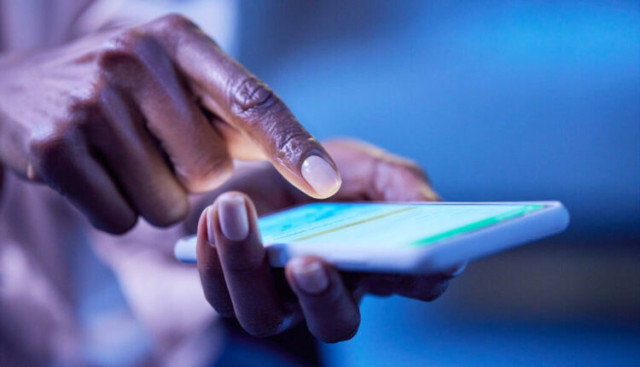Smartphones have become central to the lives of millions across Africa, delivering financial services, productivity tools, and entertainment.
These have enriched the lives of many Africans, but only for those who can afford what is still considered a luxury item, though one fast becoming a commodity in the African digital age.
But, despite the surge in demand for smartphones last two year in Africa, feature phones continue to hold their ground and account for a substantial 52% of market share on the continent.
Affordability remains the main barrier to smartphone adoption, as a person on the average African wage must carefully weigh up their options before making such a significant financial decision.
Although smartphones are still costly for many Africans, adoption has been rising.
Analyst firm Canalys reported that by the end of 2023, 68.7 million smartphones were shipped, reflecting an annual growth rate of 6%.
In Q2 2024, 17.8 million smartphones were shipped, growing by 6% year-on-year despite macroeconomic headwinds.
Smartphones in the sub-US$100 price bracket contributed a substantial 33% of shipments during the quarter.
Canalys Senior Analyst Manish Pravinkumar noted that Africans were drawn to affordable options as they grappled with rising living costs.
Speaking on the development Pravinkumar highlighted a “serious affordability gap” between feature phones and smartphones, with the former costing up to US$20 and the latter around US$100.
“Affordability is a key factor in why smartphones are not being sold to consumers.
“Today, phones have become a necessity for unlocking services. Unfortunately, due to various economic and macroeconomic factors, consumers are still deprived of affordable smartphones,” said Pravinkumar.
Yang Wang, Senior Analyst at Counterpoint Research, also noted the macroeconomic challenges engulfing Africa: “There was a post-pandemic boom followed by a massive dip due to inflation and significant currency devaluations in nearly every country in Africa, making affordability very difficult.”
Despite these financial hurdles, shipments have grown, though only modestly last quarter. Counterpoint Research detailed that the average selling price (ASP) of smartphones on the continent reached US$201 for the first time this year, up from US$179 in 2023, US$186 in 2022, and US$130 in 2021.
“Consumers are more open to upgrading to sophisticated phones so they can access government services, financial tools, and social media. The pandemic has been a blessing in disguise as people now see the value of these services. We’ve seen this virtuous cycle drive digital services and smartphones in every other region – Africa was the last bastion holding out,” said Wang.
Wang explained that prices have risen in Africa as manufacturers have recognised the demand for more expensive but feature-rich devices, such as large high-resolution screens, high-pixel cameras, and longer battery life.
“The African market is dominated by Transsion (owner of Tecno, itel, Infinix). However, brands like Xiaomi, Honor, Oppo, and even Motorola to an extent are entering the market with slightly more expensive devices, though the feature-to-price ratio is better than what consumers are used to,” said Wang.
The Counterpoint analyst also noted that the price of components increased anywhere from 50% to 100% per part, putting pressure on smartphone vendors and pushing them to sell more premium devices in Africa for better margins.
Pravinkumar agreed, stating, “That lower price band is definitely being abandoned by vendors, but it’s the vendors giving up, not the consumers.”
“It’s the consumers who are knowledgeable about smartphones that are upgrading to these more premium models,” added Wang.
“People who don’t have the means to purchase their first smartphone are likely finding it more difficult, as they no longer have the choice of a US$50 to US$70 entry-level smartphone.
“This price band has been wiped out due to component pressures. OEMs are simply not offering them and are delaying launches. If you have a US$30 smartphone and want to upgrade to a US$70 device, that option just isn’t there.”
Pravinkumar also pointed to high import tariffs and the lack of local manufacturing as key reasons why smartphones remain out of reach for half of Africa’s population. Africa was one of the slowest-growing markets, while double-digit growth rates were recorded in Latin America and Southeast Asia, the analyst noted.
“There’s nothing being manufactured in Africa today – everything is imported. For instance, in Nigeria, 99% of smartphones are imported. What happens as a result of that importation? You deplete government coffers and foreign exchange reserves, which flow out of the country. African economies then become dependent on external markets, which control the supply of shipments. Additionally, African currencies have been fluctuating, most notably in Nigeria and Egypt,” said Pravinkumar.
The cost of data is another significant factor Africans must consider after overcoming the first hurdle of affording a smartphone. Pravinkumar believes this is another key challenge to smartphone adoption, as owning a device is pointless if its services are unaffordable.
“I think if operators lowered the cost of data, smartphone penetration rates would increase. When you combine the cost of the smartphone with data bundles, it’s still on the expensive side,” said Pravinkumar.
Wang agreed, noting that it’s a virtuous cycle: if more people have smartphones, they’ll use more data, which would in turn fund operators, enabling them to reduce data costs.
Although growth has slowed and feature phones still dominate, the telecoms industry continues to innovate and explore the untapped potential of Africa.
Earlier lasy year, smartphone chip giant Qualcomm unveiled its Snapdragon 4s (Gen 2) processor, designed to bring premium smartphone features to the 2.8 billion people in developing markets. Qualcomm detailed that the new chipset will bring 1Gbps 5G connectivity, all-day battery life, and enhanced camera capabilities to entry-level smartphones.
Xiaomi, a key player in developing markets, has confirmed it will adopt the chipset and deploy a device in India by the end of the year.
Xiaomi India President Muralikrishnan B said: “Many people have yet to experience the benefits of 5G, and thanks to Snapdragon 4s Gen 2, Xiaomi can bring 5G connectivity to a broader audience, helping reshape the way the world connects and interacts.”
Wang noted that 3G smartphones have disappeared in Africa due to low demand in favour of 4G/5G models, and that 3G component prices are now identical to 4G parts.
“3G is basically being wiped out across the world, especially in Africa,” said Wang. He also pointed out that 5G components are becoming “tremendously” cheaper, with 5G device penetration now at 34%. Africa is dominated by 4G smartphones, which hold 65% of the market share, while only 1% of devices connect to 3G. The ASP of 5G smartphones fell from US$460 in 2023 to US$380 at the end of the first half of 2024.
Local manufacturing could be a key enabler for affordable smartphones in Africa by eliminating import tariffs and passing the savings on to consumers.
Pravinkumar, highlighted that there are small pockets of local manufacturing in sub-Saharan Africa, though they are not at the scale of India or Vietnam, where international companies have been incentivised to set up factories.
The analyst stressed that vendors need similar support from African governments to get affordable handsets into consumers’ hands, but macroeconomic factors such as low US dollar reserves can hinder this strategy.
“US dollars are needed to procure components and build infrastructure for factories. Without sufficient reserves, external support is required. Egypt received such support from the IMF and the Gulf Cooperation Council countries, which pumped nearly US$35 billion into the Egyptian economy.
This helped stabilise the Egyptian pound, which in turn impacted smartphone prices. I believe manufacturing could be a solution for Africa,” said Pravinkumar.
The ideal price point for consumers to transition from feature phones to smartphones is between US$50 and US$60, but Pravinkumar argued, “Producing such a phone is impossible without heavy subsidies from operators or governments, and that requires dollars.”
Maturing financing models were also presented as a potential strategy to increase smartphone penetration on the continent. Wang pointed to India, where financing models accelerated smartphone adoption.
“But Africa consists of 52 countries, unlike India, which is just one. Operationally, it could be a completely different ballgame. Friction may arise when operating across multiple markets, each with its own operators and regulatory landscape. Achieving economies of scale could be challenging, but companies are looking closely at India’s blueprint for growth,” said Wang.
Africans are now demanding more from their devices as they increasingly embrace the digital age. Equipping them with the right technology could unlock countless benefits for African societies. To achieve this, governments, operators, and vendors must collaborate to develop strategies that prepare the continent for its digital future.




















